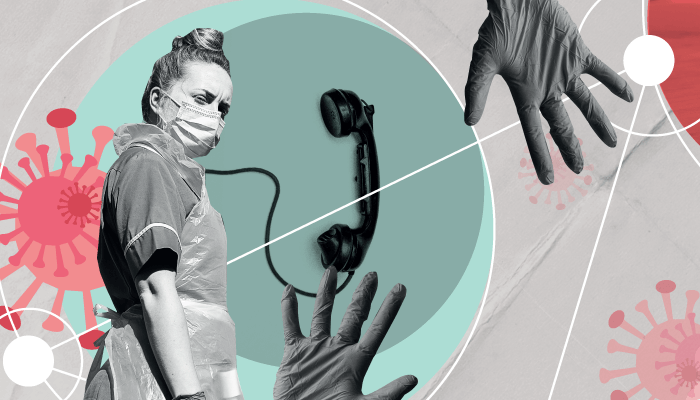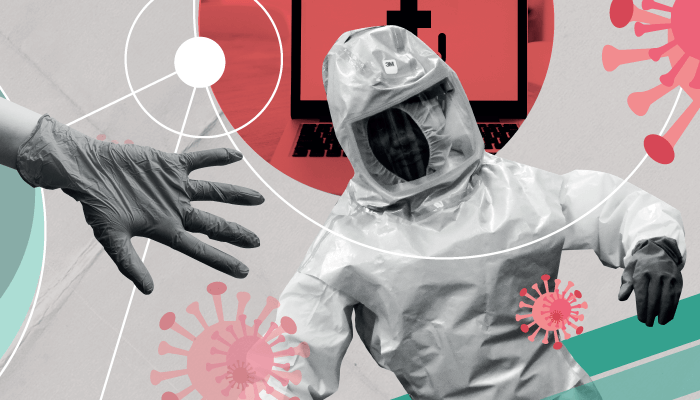
Physicians are living in a new reality. Every day, we are being called on to do incredible, creative things in increasingly complex conditions. The situation is evolving in real-time and the impetus is on us to make sound decisions that keep ourselves and our patients safe – all while providing the best possible care. We must do more than simply take precautions; we must find innovative approaches to treatment as well – and glaucoma is no exception.
Though hospitals and surgical centers are reopening, many continue to experience major backlogs as there is a lack of OR time available for incisional glaucoma treatments. In many locales, equipment is unavailable as resources are being reallocated for emergent care. Patients’ fear of COVID-19 exposure also continues to be a major concern, particularly for the elderly and vulnerable. This issue is compounded by many nursing homes and long-term care facilities still being in mandatory lockdown, which prevents patients from getting to the doctor or to the pharmacy.
To overcome these challenges, there are a few ideas to consider: implement office-based procedures to move your patient from the OR backlog to the front of the line; choose procedures that are safe and durable with minimal post-op care to reduce follow-up visits; and incorporate new office operating procedures to keep yourself, your staff, your patients and your business safe.
Providers have a principal responsibility: not being vectors for disease. Our duty is to help people, not put them at risk. With that in mind, my practice has reimagined everyday logistics and implemented a series of thorough safety protocols.
These new operating procedures begin well before a patient arrives, with intake paperwork, patient history, and pre-screening completed over the phone where possible. Patients are also triaged virtually to see if they have been out of the country or to any hotspots recently, and to make sure they haven’t had a fever or exposure to a COVID-19-positive patient. At the time of appointment, a staff member – wearing a face shield and other appropriate PPE – greets the patient at the door with sanitizer and a mask, if one is needed, and a temperature check is performed.
Once a patient passes the pre-screening and temperature check, they wait outside (weather permitting) or in their vehicle until they are called to be seen. Check-in, temperature, and IOP checks can be performed car-side as well. Patients only wait inside our waiting room in extenuating circumstances. Even then, the waiting room is arranged to allow for proper distancing. It is free of all magazines and print materials, and thoroughly sanitized on a regular basis.
Patient flow within the practice is also optimized for efficiency and linearity. Patients enter through one door and exit through another, creating unidirectional flow. Thinking in a completely different logistical fashion is a big change, but it is critical to the economics of the practice. In the past, we would bring the patient into the exam lane, maybe take some history, then escort the patient to another room for testing and then back to the exam lane to see the doctor. Now, each room the patient visits remains empty until they have been re-sterilized, which requires extra time and labor. Currently, most testing is performed prior to the patient entering the exam lane. This reduces patient movement around the office, contributes to a linear flow, reduces the need for unnecessary sanitation and keeps exam lanes open.
We have also experimented with hybrid models. For example, after a patient is tested and leaves the clinic, I speak to them over the phone to discuss their test results. This combination of tele-health with an in-person component has become very useful for us.
During all face-to-face patient interactions, proper PPE is maintained, as well as some additional precautions. We developed our own shields that fit over the slit lamps as an extra barrier early on in the pandemic. Now, we have switched to commercially available shields that are specifically designed to reduce exposure for slit lamps. We also try to limit conversation as much as possible to prevent any viral transfer during close interactions, with the overall goal of keeping facetime to six minutes or less.
All of these logistical alterations have reduced facetime by 25-30 percent, but the key is to not make patients feel rushed or neglected. We help them understand that these amendments are designed to reduce risk for them and for our staff. Fortunately, we have received nothing but positive feedback so far – not a single complaint or negative review – as patients are generally appreciative of the protocol changes to reduce exposure.
Once they’ve experienced the safety precautions we’ve implemented, they feel extremely gratified and, in many cases, are more inclined to return feeling more comfortable and are less concerned about exposure to COVID-19. As a provider and business owner, it is extremely important to me that my staff, and our patients, feel confident that we’re doing everything within our power to protect them.
After being severely restricted for several months, surgery centers are left with a backlog of cases – it has never been more valuable to have safe and durable treatment options that can be performed in the clinic.
When safety is paramount and when flexibility and durability are key, MicroPulse transscleral laser therapy (TLT) with the MicroPulse P3 Delivery Device (Iridex) is an excellent tool. I’ve used it in both the office and the surgical center for many years. Many patients, particularly seniors, are scared to come to the hospital or clinics. So, when I tell them I can treat their glaucoma with an efficient procedure that can be performed in the office with no cutting and reduced risk of infection, they are all ears.
I make sure they understand that MicroPulse TLT does not decrease the success of subsequent procedures, so it can be considered earlier on the glaucoma continuum. The procedure is quick, and standardized to 100 seconds per eye. The relatively short procedure time allows us to reduce facetime and move patients through the clinic efficiently. More than that, the durability of MicroPulse TLT allows us to push out follow-ups, further reducing face-to-face interaction – a boon in COVID-19 times.
Another benefit of MicroPulse TLT is the reduced impact on activity level after the procedure. We patch the eye and send patients home with a topical steroid; the next morning, they remove the patch and resume normal activities. In these times, patients are understandably reluctant to invest in any procedure that requires a great deal of follow-up or restricts their activity or exercise. With MicroPulse TLT, patient downtime is negligible, requiring minimal in-office follow-ups after the procedure.
As my understanding and experience with MicroPulse TLT evolves, my patient outcomes have improved, becoming more consistent and predictable. Iridex recently introduced a revised MicroPulse P3 Delivery Device that, in my opinion, offers improved ergonomics, greater stability and better light coupling to the tissue than the original device. I’d say the revised design has reduced the learning curve for quick implementation into practice. Although it may not be right for every patient, it is a useful tool to have in your armamentarium, especially if you have no access or limited access to an ASC.
Complete lockdowns are still in effect at many nursing homes and care facilities. Here, telemedicine and online pharmacies help reduce patient burden and unnecessary exposure, especially for high-risk patients. So, we’ve employed a variety of mechanisms for patients to get their medications directly. Even before COVID-19, we transitioned to a considerable number of mail-order acquisition modalities, rather than making patients go to a brick-and-mortar pharmacy. We’ve also created new accounts with online pharmacies to reduce the office burden of ensuring patients get their medications directly.
In normal circumstances, we are quite strict about requiring patients to come in for a visit before renewing their glaucoma medication. We like to ensure that a person’s IOP is well controlled; however, circumstances have forced us to become more flexible on our rigid posture on refills. Consider a patient who’s been stable for several years but is running low on medications and can’t physically come to the office because they are in lockdown. This patient would be an excellent candidate for a telemedicine visit. We schedule a phone or video chat, review their medications, reinforce compliance, and then forward their prescription refill to their local pharmacy or online pharmacy, extending the length between visits.
In addition to expanding to mail-order and online pharmacy options, we have also employed larger bottles where possible or more refills to reduce patient visits to physical pharmacies. We have also sought partnerships with other eye care practitioners who are in closer proximity to the patient for more timely care when needed. Commonly, a comprehensive ophthalmologist or optometrist might have passed a patient on to us so that the totality of glaucoma care could be under our control. Now, we may partner with them to make sure the patient has a local touch point or if they just need a follow-up pressure check or basic testing. Partnerships of this nature have become even more important than ever and will continue to be in the coming months.
As the COVID-19 situation gradually subsides, some of these approaches may start to disappear and our practices will gradually return to normal. The telehealth component, however, will most likely stay. It’s become an incredibly valuable tool and though it will never fully replace in-person visits, there is certainly a place for it in today’s world. So, where does that leave us now? This pandemic has forced us to adapt our practices and protocols in creative ways – for the better. Let us take these new lessons and tools with us into the future, so we may strive to continually evolve and offer our patients the best possible treatment options – and the best possible care.

